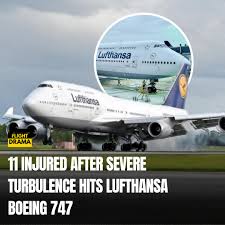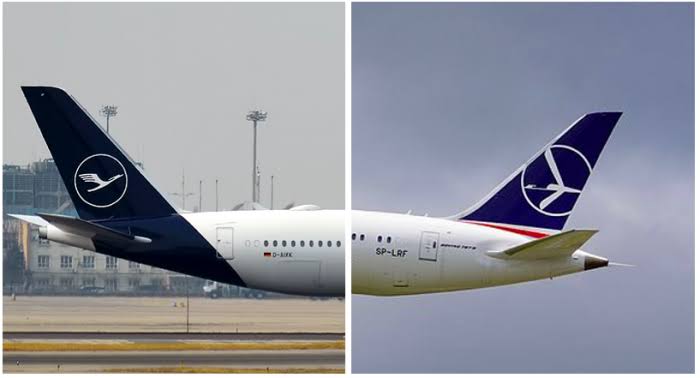Lufthansa Boeing 747 passengers injured along with five crew during turbulence
On November 11, 2024, Lufthansa Flight LH511, a Boeing 747-8 registered as D-ABYP, departed from Buenos Aires’ Ezeiza-Ministro Pistarini Airport (EZE) bound for Frankfurt International Airport (FRA). The flight, carrying 329 passengers and 19 crew members, encountered severe turbulence over the Atlantic Ocean while traversing an intertropical convergence zone (ITCZ), a region notorious for sudden and intense air movements.
The turbulence struck unexpectedly, causing the aircraft to jolt violently. Passengers described abrupt movements and significant shaking, leading to fear and uncertainty on board. As a result, five passengers and several crew members sustained minor injuries, including bruises and strains. Despite the unsettling experience, the aircraft did not suffer any structural damage.
Aviation.Direct

Upon landing safely in Frankfurt on November 12 at 10:53 a.m. local time, Lufthansa’s Special Assistance Team provided immediate medical attention to the injured individuals. The airline emphasized that the safety of the flight was never compromised and expressed regret for any inconvenience caused. They reiterated that the safety and well-being of passengers and crew members remain their top priority.
The ITCZ is a belt around the Earth near the equator where trade winds from both hemispheres meet, often leading to unpredictable and severe weather conditions, including thunderstorms and turbulence. Pilots are trained to anticipate and navigate these challenges, but the sudden nature of turbulence in such zones can still pose risks.
Sky News
This incident highlights the ongoing challenges turbulence presents in air travel. According to the National Transportation Safety Board (NTSB), turbulence accounted for 37.6% of all accidents on larger commercial airlines between 2009 and 2018. Flight attendants, who are often moving about the cabin, represent nearly 79% of those seriously injured in such events.
AP News
Climate change is expected to exacerbate turbulence incidents. Paul D. Williams, a professor of atmospheric science at the University of Reading, notes that global warming is altering temperature patterns in the upper atmosphere, leading to increased instability in jet streams and, consequently, more frequent and severe turbulence.
AP News

To mitigate risks, the NTSB recommends enhanced information-sharing among pilots, carriers, and air traffic controllers regarding weather and turbulence incidents. Passengers are also advised to keep their seat belts fastened whenever seated to reduce injury risk during unexpected turbulence.
AP News
Lufthansa’s response to the incident demonstrates the airline’s commitment to passenger safety and well-being. The prompt medical attention and support provided to affected individuals underscore the importance of preparedness and swift action in ensuring passenger safety during unforeseen events.
Airspacenews.com
This event serves as a reminder of the unpredictable nature of air travel and the critical role of adherence to safety protocols. Passengers are encouraged to remain vigilant and follow crew instructions, especially regarding seat belt usage, to enhance safety during flights.




